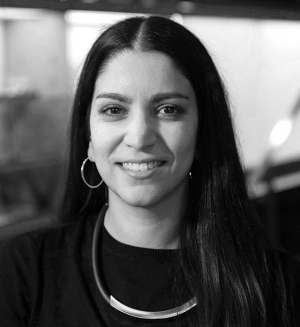The way we work, and what the office of the future might look like, is something I often think about. I imagine it’s on the minds of many of you, as well.
COVID-19 pandemic aside, various factors including technological advances, the rising cost of living and demographic shifts have accelerated the need to reconsider the 9 to 5 — how we produce, how we collaborate and from where.
The pandemic has upended the ways so many people work and, three years later, has drastically shifted how work is perceived and experienced. It has allowed for more flexibility, reduced commutes and better overall work-life balance for some, but it has not been without its challenges. Remote work has also blurred the boundaries between personal and work life, has transformed the way we communicate and has introduced new stresses to mental health.
Not everyone has had the option to work remotely, either. Some industries and front-line jobs that will always require a physical presence haven’t had a break in routine. Yet the workplace for these employees will likely change in the years ahead, too, with companies increasingly investing in new technologies, from AI-powered automation and chatbots to virtual-reality tools that can help with training for complex tasks.
Considering these and other developments, there is widespread consensus that the need exists — and will remain — for a more human-centric approach. This means creating spaces that prioritize employees’ health and well-being, and requiring leaders to be more flexible and empathetic. Three years on, companies large and small are still figuring out what works best in terms of producing optimal output while ensuring that workers have what they need to thrive in an ever-evolving economy.
Following reviews of research, as well as through consultations with industry leaders, Deloitte concluded that by 2030 “Canada will be home to a leading hybrid work environment that promotes inclusive growth and benefits all working individuals.”
But how do we get there? We don’t know what offices will look like in three, five or 10 years from now. There is no one-size-fits-all solution, but future success will highly depend on the ability to accept different working styles and accommodation needs.
It’s a big topic, one likely to remain front of mind for years ahead. Our cover story delves deeper into the conversation, looking at both the benefits and disadvantages of these changes to the world of work.
In this issue, you will additionally read about how social media can serve as a valuable tool to promote mental-health awareness and build community. Concordia researchers and alumni also share insight into some of the challenges and opportunities involved in the process of welcoming refugees and asylum seekers.
Finally, if you’ve seen any of the colourful murals adorning Montreal’s buildings, it’s likely there’s a Concordian behind it. I invite you to learn more about some of the grads helping to bring the city to life with the non-profit mural organization MU.
From pioneering research and award-winning work to record-breaking support for initiatives related to equity, diversity and inclusion, our alumni and friends are making their mark here at Concordia and around the world.
I hope you enjoy reading these stories — and perhaps even have your own to share. Planning around Concordia’s 50th-anniversary year is ramping up. If you have a standout story we should know about ahead of our 2024-25 celebrations, we want to hear it. Your feedback and suggestions are always welcome.
Until the next issue, I wish you all the best.


